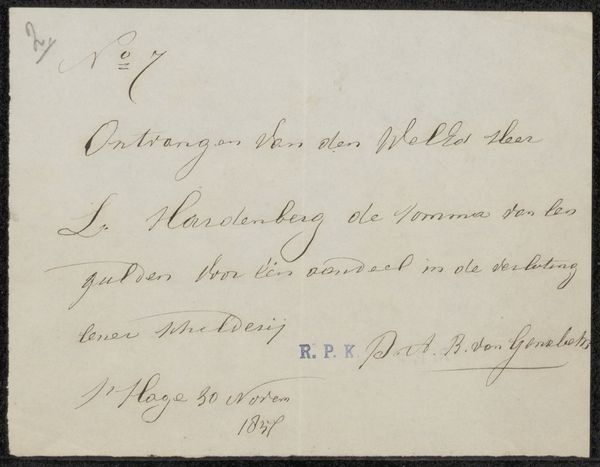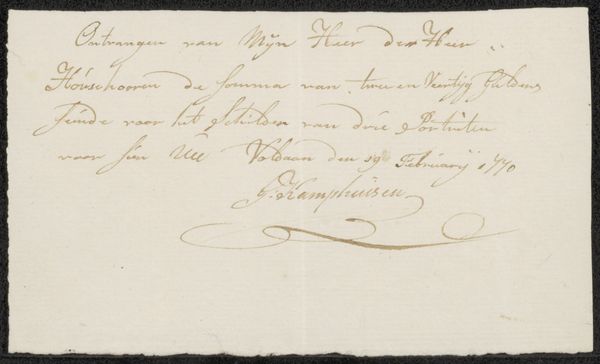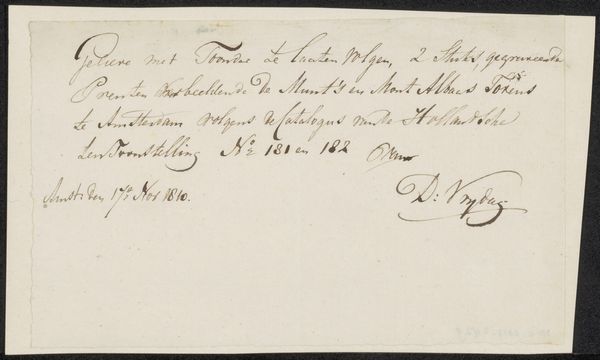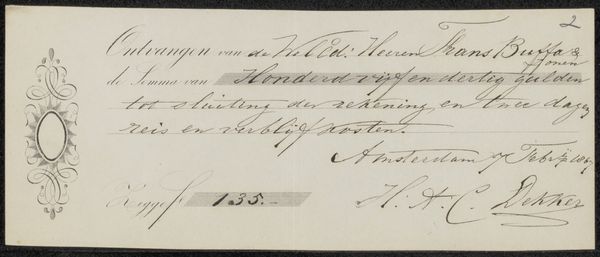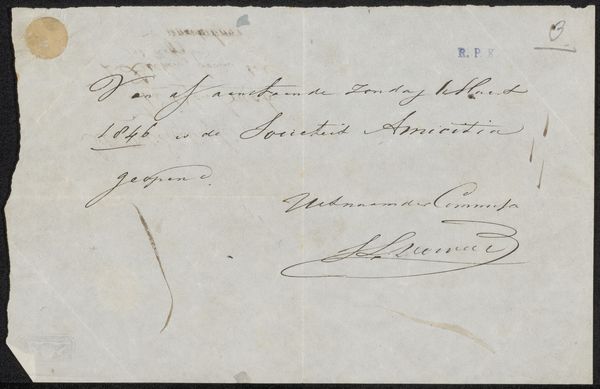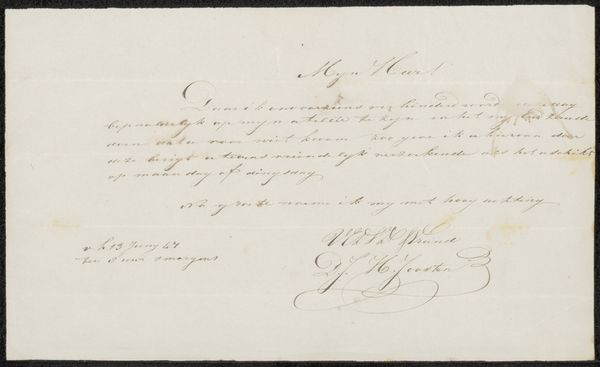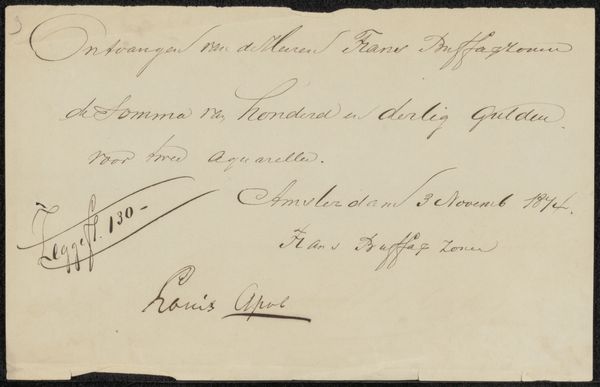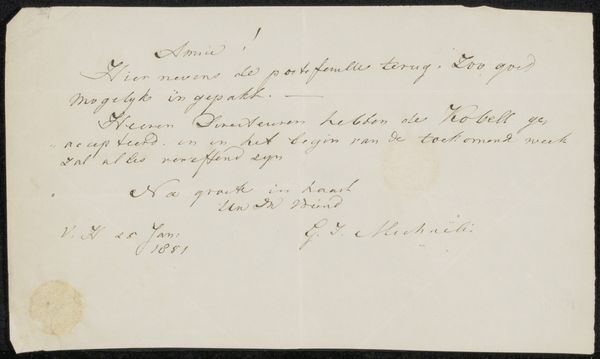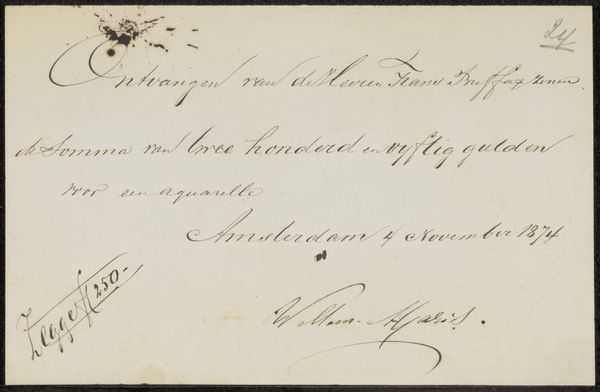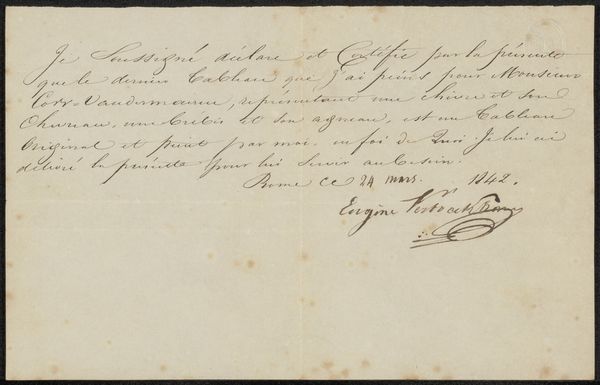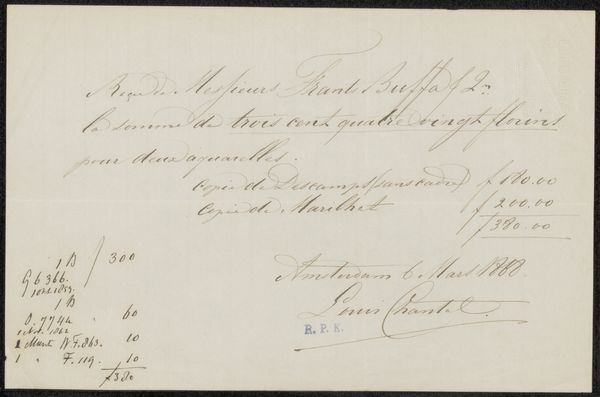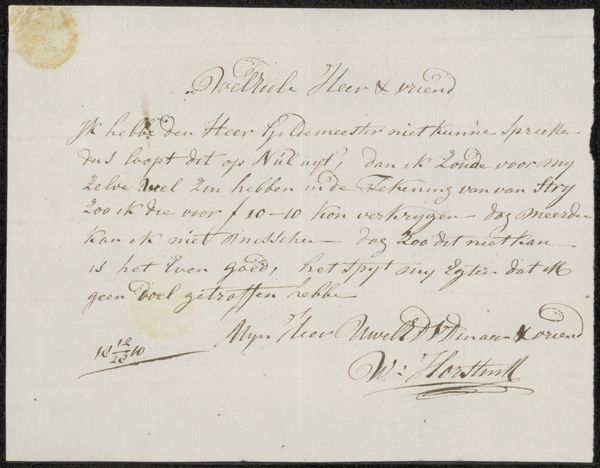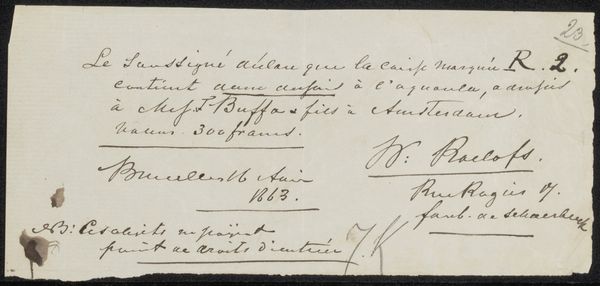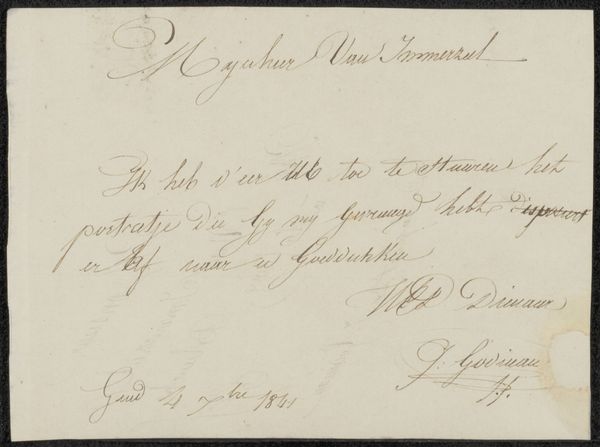
drawing, paper, ink, pen
#
drawing
#
paper
#
ink
#
romanticism
#
pen
#
calligraphy
Copyright: Rijks Museum: Open Domain
Editor: This drawing from possibly 1827 is titled "Kwitantie voor Johannes Immerzeel," created by Elisabeth Barbara Schmetterling using ink on paper. It almost looks like an official document, given the carefully rendered calligraphy. What can you tell me about its historical significance? Curator: Well, looking at this through a socio-political lens, it presents itself as a piece of economic history. The handwriting signifies status and formal transaction, typical of administrative records in the 19th century. What interests me is the purpose of the Almanak mentioned. Why immortalize transactions, however beautiful, through art? Was the patron, perhaps, subtly advertising themselves through a commissioned engraving for a broader almanac? Editor: I didn’t think about it in that context. So, this receipt, because of the named parties, tells a more comprehensive story than simply being a record of payment? Curator: Precisely. Consider how the burgeoning middle class during the Romantic era utilized art to establish and perform status. Patronage had evolved, and what previously only aristocracy could do, wealthy middle class members started practicing too. This receipt isn't just about money; it's about reputation. What statement do you think Schmetterling makes with such elaborate penmanship for such functional media? Editor: I think Schmetterling might be consciously elevating the everyday transaction into an art form, which says a lot about her professional pride. The way that social class and economic activity were shaping artistic production at that time is starting to make much more sense to me now. Thank you. Curator: It’s fascinating, isn’t it, to consider how art blurs lines in function with political aspirations. I never thought about receipts as commentary.
Comments
No comments
Be the first to comment and join the conversation on the ultimate creative platform.
